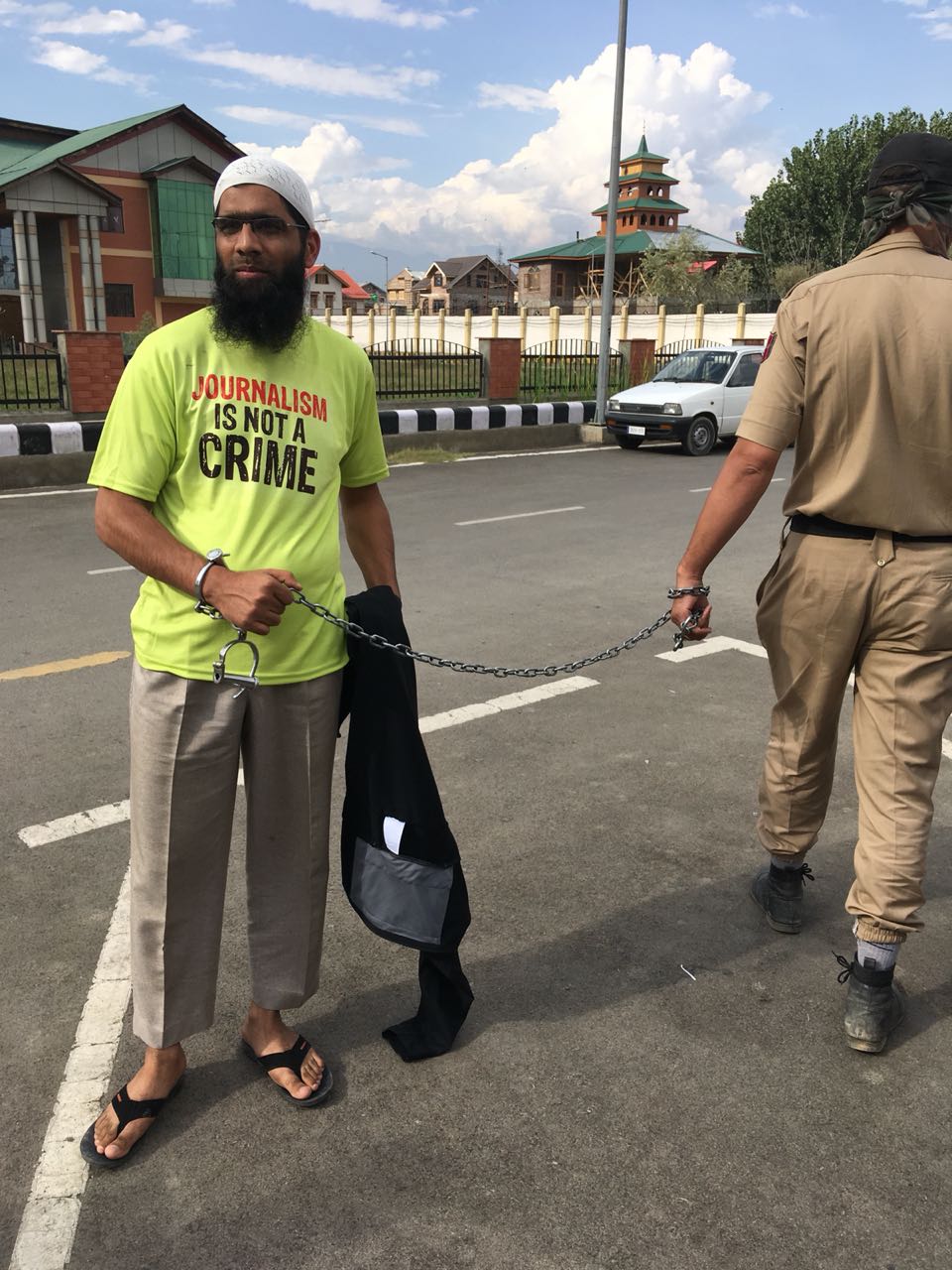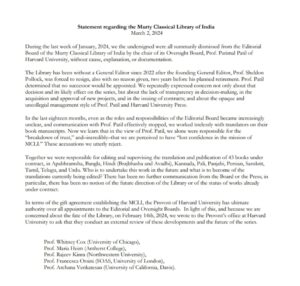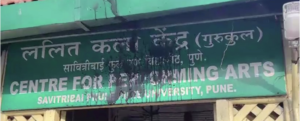In the four months that have passed since the assassination of one of Kashmir’s most prominent journalists Shujaat Bukhari in June, little headway has been made to bring closure in the legal course as the charge-sheet is yet to be submitted to court. Moazum Mohammad has a special report for FreeSpeechCollective’s Impunity Indicator
Name: Shujaat Bukhari
Date of Death: June 14, 2018
Brief Synopsis: Shujaat Bukhari, 50, editor of Rising Kashmir and an active voice for peace in the region, was shot dead by three assailants riding on a motorcycle, minutes after he exited his office in a high security area in the Press Enclave in Srinagar, capital of Jammu and Kashmir. Two of his bodyguards were also killed in the attack.

Police Investigation: The J&K police released images of the attackers, taken from security cameras that recorded their movements. However, they are yet to identify them and no militant group has come forward to claim responsibility for the attack. Police put out a tweet asking members of the public for information:
General public is requested to identify the suspects in pictures involved in today’s terror attack at press enclave.#ShujaatBukhari @JmuKmrPolice @spvaid @DIGCKRSGR @PoliceSgr pic.twitter.com/3cXM0CC8BD
— Kashmir Zone Police (@KashmirPolice) June 14, 2018
On June 28, 2018 the police released a list of four suspects: Sajad Gul (based in Pakistan), Azad Ahmed Malik, Muzafar Ahmad Bhat and Naveed Jatt, reportedly from Paksitan, as the killer. Jatt had made a dramatic escape from custody while at a Srinagar hospital in February 2018.
–––
Entrenched Impunity and normalising of attacks on media
By Moazum Mohammad
In the four months that have passed since the assassination of one of Kashmir’s most prominent journalists Shujaat Bukhari in June, little headway has been made to bring closure in the legal course as the charge-sheet is yet to be submitted to court.
The murder of Shujaat Bukhari – who survived an assassination attempt in 2006 – rattled the journalist community across the region.
Subsequently, the Jammu and Kashmir Police claimed to have cracked the high-profile assassination and claimed that the plot to kill the journalist was hatched by the militant group Lashkar-e-Toiba in Pakistan and its three cadres executed the plan. In return, the militant outfit blamed “Indian agencies” for the killing aimed at ‘defaming the militants’. Amid the controversy, the police has been scrambling to bring his assassins to justice as they continue to be at large.
This delay in bringing legal closure to the case has made the journalist community in the Valley point fingers at the police claim of cracking the murder case. Kashmir Editor Guild (KEG), a grouping of Kashmir-based leading newspaper editors, in September expressed “regret” over the police for being unable in filing charge sheet in the murder case. The editors’ body noted with concern that the unwarranted delay was in the face of the ‘police claim’ that it had ‘solved the case’.
Rising Kashmir Assistant Editor Faisul Yaseen too seconds KEG’s assertion. According to him, there is no progress in the case and he blamed the police for using his former boss’s phone to spy on journalist WhatsApp groups. “Shujaat sahib’s phone is with police and recently his (Shujaat) number exited from a (WhatsApp) group. When we complained to police about it, they (police) came up with a bundle of lies to defend them,” Yaseen said.
A senior police officer, who is part of the Special Investigation Team (SIT) established to get to the bottom of the case, reasoned that the killers are absconding which is why the charge-sheet is pending. “The progress depends on nabbing absconders. They (absconders) are militants. Their killing or arrest will bring closure to the case,” he said.
Not only Shujaat Bukhari, but a long list of murders of over a dozen journalists slain in the region has found no closure. In fact, the Rising Kashmir editor’s murder has once again brought focus on the long forgotten 19 journalists killed for doing journalism in the region beset with insurgency.

Cases remain mired in controversies
The lack of closure in such cases, explains an independent Kashmir-based journalist Gowhar Geelani, is a “deliberate” attempt by the authorities to leave it to wild guess about people behind the killings. “These cases remain mired in controversies”, said the former editor at Deutsche Welle.
Ironically, instead of guaranteeing safety to journalists after Shujaat Bukhari’s murder, the government’s approach has been more hostile towards media workers. While Aasif Sultan, assistant editor at Kashmir Narrator has been jailed for alleged links with militants, another young reporter Aqib Javed was summoned by the counter-terror National Investigation Agency to its headquarters in New Delhi. Worse, at least 20 journalists were physically assaulted and several ‘counseled’ and quizzed in the last four months. These acts pieced together demonstrate the highhandedness of the state against the journalist community in order to ‘tame’ them.
In the dark of night on August 27-28, an army of policemen raided Aasif Sultan’s house in the interiors of Batamaloo to arrest him. After spending five days of illegal detention at police station Batamaloo, according to Asif’s editor Kashmir Narrator, Showkat A. Motta, he was shown arrested by police.
Two months into jail, bail arguments have been closed in Aasif’s case in Srinagar and bail is “expected” anytime now unless the “state authorities have no second thought to re-arrest him”. Right from the day of his arrest, Motta has argued against J&K police’s “baseless charges” slapped on the jailed journalist. “There is no evidence Aasif is member of Hizbul Mujahideen which police claimed in the charge sheet,” he said.

While journalists in the Valley were outraged and held protests in solidarity with Aasif, Motta seems annoyed by the “ugly shocking silence” maintained by the larger media community.
“In ‘90s the state would threaten journalists in a subtle manner but now they are doing it brazenly because they know they (journalists) are afraid and divided,” he said.
It would be incorrect however, to make a case against the community maintaining silence. Instead the large-scale daily assaults on media in the Valley have normalized such attacks. Like on October 17, 2018 almost a dozen journalists were ruthlessly beaten in front of cameras in the capital Srinagar. Despite the brazen attack, journalists felt helpless.
“The attacks have normalized in the face of mounting assaults on media. Reporting in a conflict zone like Kashmir was always tough but it has become dangerous now,” avers a senior journalist at Kashmir Reader Shahnawaz Khan, “You are often at the mercy of government forces and you never know crossing line which is always followed by assault on media”.
Continuing harassment and intimidation
His argument is not misplaced. Since 2016 when public uprising broke out in the region, the government overtly as well as covertly pulled up the media in Kashmir, blaming it for incitements. On October 2, coincidentally Gandhi Jayanti (the birth anniversary of Mahatma Gandhi), Mehbooba Mufti-led government banned daily Kashmir Reader for three months without citing any reason. Since then, the police’s intelligence department deployed a new means of curbing press freedom by mailing a threatening questionnaire.
In each questionnaire, they ask news outlets why the matter should not be taken up with the Press Council of India for an inquiry.
Shahnawaz Khan decodes the ultimate purpose of such questionnaires: to impose self-censorship among journalists. The state has largely been able to achieve this through such intimidatory tactics. “Reporting about conflict has become tough. Sometimes police may remind you about crossing the line and next time you avoid the story to avert harassment,” he added.
While a few journalists openly brave these threats, the majority deliberately maintain stoic silence so as not to let their work get affected. In July this year, a New Delhi based journalist Zulkarnain Banday was called by police’s intelligence department to Joint Interrogation Centre on Srinagar outskirts. He was posed a barrage of questions ranging from the “redundant to the ridiculous” about his website lostkashmirihistory.com and some Facebook posts. “I was told by police officer to close down the website. But I told him to do it yourself as it is not a big deal for them,” he said.
The young journalist reasoned that the motive behind the harassment is to “control” journalists and social media platforms which allows people of Kashmir to reach out to the world.
“Write about corruption, development and business. Why are you after conflict?” he says a police officer told him.
Impunity, Intimidation and a Shaping of the Narrative
Broadly speaking, the trend of harassment and attacks on media outlets and journalists in India have mounted since the Narendra Modi government assumed power in India in 2014. Those critical of the BJP-led regime on traditional or social media are dubbed as ‘anti-national’.
However, in the Kashmir context, Gowhar Geelani said the issue is the ‘political dispute’. He cites the NIA charge-sheet against Kashmir photojournalist Kamran Yusuf claiming he is not a ‘real journalist’ because Kamran had not covered ‘any developmental activity of the government’.
“If you take that case as a reference, physical attacks, harassment or summoning journalists to police stations is to silence Kashmir journalists who are into some kind of narrative building, ” he said.
This he said comes in the face of Indian army’s mooting an idea of establishing Directorate General of Information Warfare (DGIW), an independent unit within the Army Headquarters to counter social media campaign.
Moazum Mohammad is a journalist based in Kashmir



1 thought on “Shujaat Bukhari: The entrenched impunity and normalising of attacks on media”